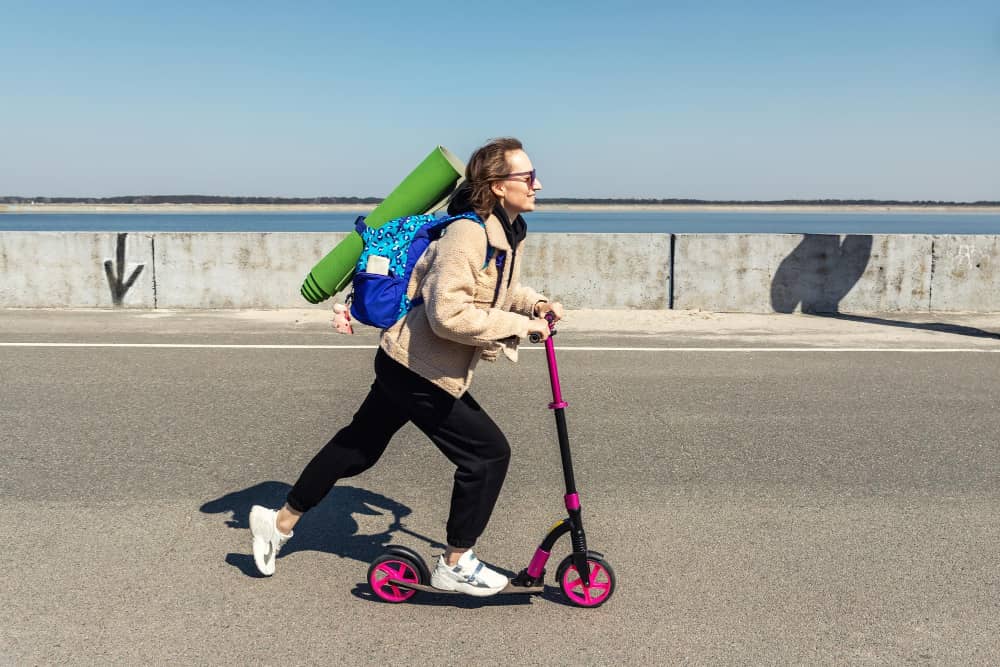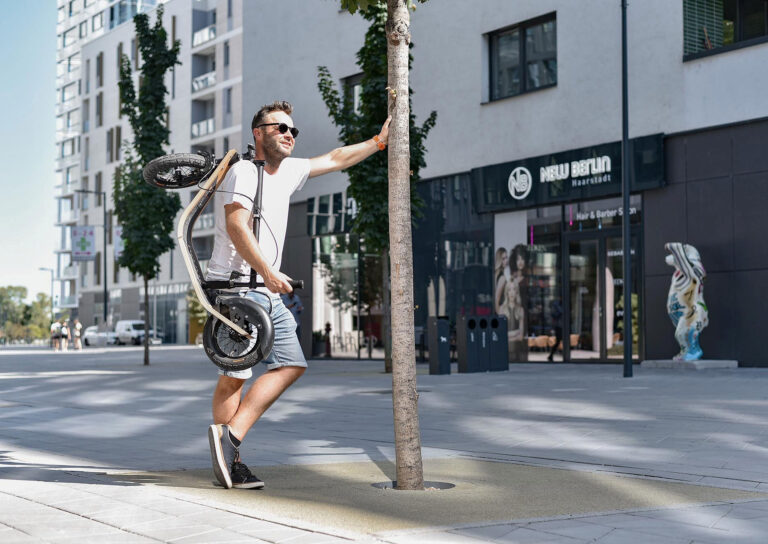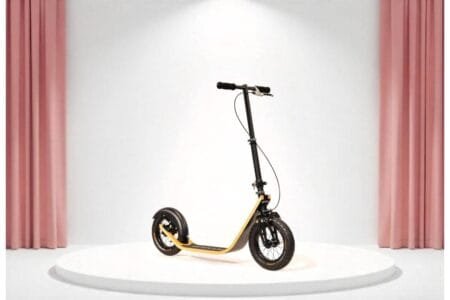
Why Foot Scooters for Adults Are a Simple, Promising Alternative to E-Scooters
Table of Contents
In an age where sustainability is not just a trend but a necessity, foot scooters for adults are emerging as a simple, promising alternative for eco-friendly commuting. Imagine gliding through bustling city streets, feeling the wind on your face, while simultaneously reducing your carbon footprint. Push scooters blend convenience with environmental consciousness, making them an attractive choice for people who want to move efficiently without relying on complex technology.
Gone are the days when commuting meant sitting in traffic or depending on gas-guzzling or battery-dependent vehicles. These compact, human-powered scooters (they are often called kick scooters or push scooters) are lightweight, portable, and easy to store, allowing riders to travel short distances freely and flexibly. More than a means of transport, they represent a small but meaningful step toward sustainable living, proof that not every solution needs to be powered by electricity.
Environmental Benefits Without the Battery
One of the clearest advantages of a foot scooter is its balanced environmental profile. When compared to combustion-engine vehicles, both push scooters and e-scooters share the same zero-emission performance in use, with the added benefit of quietness over traffic noise.
In essence, the foot scooter avoids the weaknesses of both powered categories: it matches e-scooters for clean, silent operation, yet sidesteps the environmental burden that comes with lithium mining, battery manufacturing, and recycling. Meanwhile, it completely outperforms combustion-engine transport by producing no exhaust emissions, no fuel consumption, and almost no operational waste.
Because of its simple mechanical design, a well-made foot scooter uses fewer materials, creates less waste, and can last for many years with basic maintenance such as tire checks and cleaning. Although low-quality models can wear out quickly or make noise, good ones remain durable, efficient, and pleasantly quiet. A sustainable choice that needs no charging, no apps, and no complex infrastructure.
The Comeback of Kick Scooters in an E-Scooter World
Electric scooters have dominated city streets in recent years, but not everyone welcomes their rise. Shared e-scooters clutter sidewalks, require frequent charging, and often have short service lives. In many cities, electric scooter usage has been restricted or even banned due to safety and environmental concerns. [Read more: Life cycle assessment of electric kick scooters: consolidating environmental impact quantification and concluding climate-friendly use options — Enveurope, 2024.]
Meanwhile, a subtler shift is taking shape. More and more adults are rediscovering the simple joy of foot scooters: reliable, low-maintenance, and always ready to go. With no batteries to charge or electronics to repair, a push scooter embodies a kind of freedom that modern, over-engineered transport often lacks.
City planners are beginning to notice this shift. Some municipalities now include scooters in their “active mobility” plans, alongside cycling and walking initiatives. Kick scooters fit perfectly into this vision: sustainable, inclusive, and accessible to almost everyone.
Why Push Scooters Still Matter
Push scooters remain relevant for one simple reason: they work. They fill the gap between walking and cycling, offering a convenient way to cover short-to-medium distances without fuel, noise, or complexity.
They also make financial sense. Without fuel, insurance, or charging costs, a scooter is among the most economical ways to move around the city. Maintenance is minimal (just a bit of lubrication and an occasional tire check). For many, that’s a refreshing contrast to devices that constantly demand updates, charging cables, or replacement parts.
And while a push scooter might not replace every trip, it can easily complement public transport. Fold it, carry it on a train, and use it for the “last mile.” That flexibility keeps them relevant in a changing mobility landscape; especially as cities push for cleaner, smaller, and quieter personal transport solutions.
Health and Lifestyle Benefits of Foot Scooters for Adults
Choosing a foot scooter isn’t just good for the planet — it’s good for you. Every push engages your core, legs, and arms, offering low-impact physical activity that fits naturally into daily life. It quietly keeps you moving, turning your commute into effortless exercise and even a fun way to lose weight without feeling like a workout.
Physically, it helps improve balance, coordination, and endurance. Mentally, it offers a refreshing break from screens, noise, and static commutes. Feeling the rhythm of motion and the fresh air can reduce stress and elevate your mood.
Beyond fitness, there’s a psychological benefit: a sense of autonomy and play. In a world where so many activities are digital or sedentary, riding a scooter reconnects you with your body and surroundings. It’s a reminder that movement itself can be both practical and enjoyable.
Push Scooters vs. Electric Scooters: The Honest Comparison
| Feature | Push Scooter | Electric Scooter |
|---|---|---|
| Energy source | Human-powered | Battery-powered |
| Emissions | Zero | Indirect (battery production & charging) |
| Weight | 4–7 kg | 12–25 kg (or even more) |
| Maintenance | Minimal | Frequent (battery, motor) |
| Legality | Unrestricted in most countries | Banned or limited in several cities |
| Range | Unlimited | Limited by battery life |
| Cost | Lower purchase & upkeep | Higher initial & running costs |
The comparison highlights a simple truth: for short distances, the manual scooter often wins. It’s lighter, cleaner, and requires almost no ongoing expense — while still giving you full control of your speed, direction, and effort.
Choosing a Scooter That Fits Your Lifestyle
If you’re considering joining the growing community of scooter riders, think about how and where you’ll use it.
- Frame and build quality: Aluminum or steel frames last longer and handle daily wear.
- Wheel size: Larger wheels (10–12 inch) offer smoother rides on uneven streets; smaller ones are ideal for flat surfaces.
- Weight and load capacity: Choose a scooter that feels stable and fits your body type comfortably.
- Foldability: A foldable design makes it easy to store at home or take on public transport.
Above all, pick one that suits your lifestyle, not just your commute. A well-chosen push scooter can turn errands, city commutes, or park rides into something you look forward to rather than a task to be endured.
Real-Life Users: The Joy of Simple Commuting
Many riders describe switching to a foot scooter as rediscovering a small kind of freedom. One commuter explains how she replaced her bus rides with daily scoots to work: “It’s a great way to get to work and stay active at the same time. I even use mine on quiet country roads with my dog running beside me. It makes daily movement something I actually look forward to.”
Another user, living in a country where electric scooters are banned, values how riding his push scooter supports his mental well-being: “Mental health can be an issue when one retires, lack of social contact and sense of purpose can be addressed, just by scooting to the local park. I find myself constantly talking to strangers about the benefits of scooting.”
Stories like these show that the appeal of push scooters goes beyond convenience. It’s about reclaiming the pleasure of simple movement. A freedom that doesn’t depend on technology.
Conclusion: The Freedom of a Battery-Free Ride
Foot scooters for adults prove that sustainable commuting doesn’t need to be complex. They’re quiet, clean, affordable, and encourage real movement in our daily routines. In a world driven by electricity and algorithms, the idea of human-powered transport feels refreshingly authentic.
By choosing a push scooter, you contribute to cleaner air, less waste, and calmer streets, while enjoying the satisfaction of moving under your own power. It’s a small act of sustainability that adds up, one ride at a time.
Rediscover the freedom of a battery-free ride. Simple, promising, and sustainable. Kick scooters remind us that progress sometimes means going back to basics.




